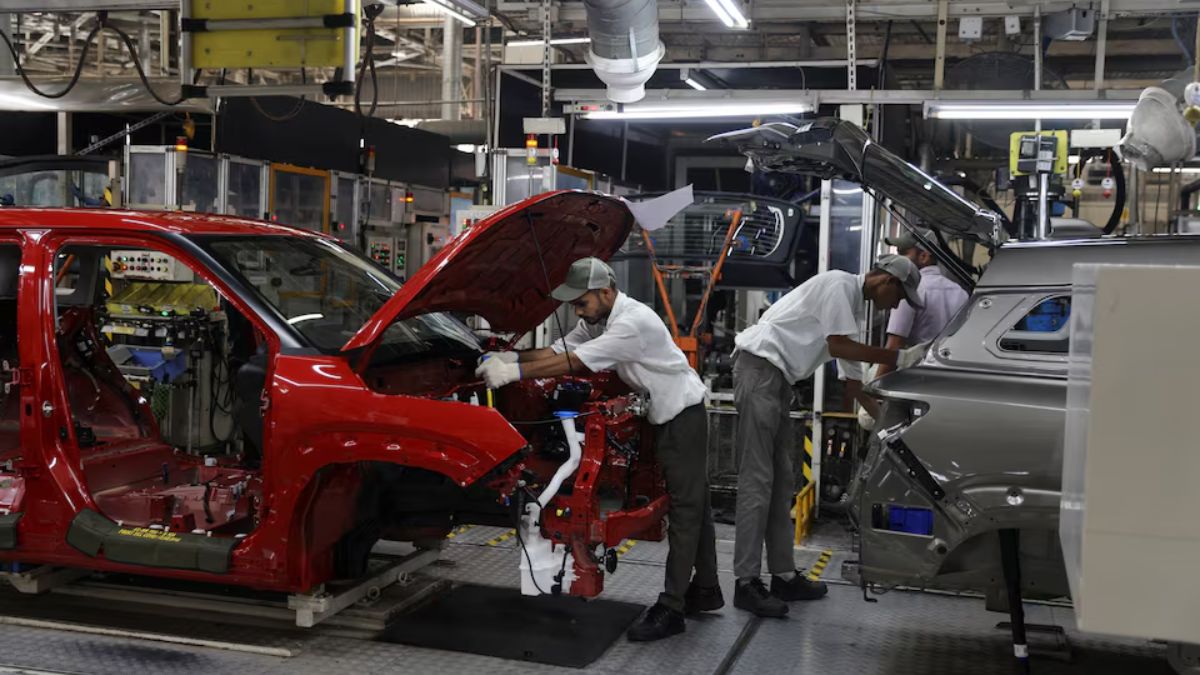The Narendra Modi government’s reforms to the goods and services tax (GST) regime and attempts to improve the ease of doing business could help make up for losses from US President Donald Trump’s tariffs on India.
Trump has imposed 50 per cent tariffs on India that could affect as much as 60 per cent of Indian exports to the United States and drag down the GDP growth for this year by 0.4-1 per cent. But GST rate cuts could spur consumption-led growth that could make up for some of that GDP growth loss.
Under proposed plans, the government could reduce four GST slabs (5 per cent, 12 per cent, 18 per cent, and 28 per cent) to two slabs of 5 per cent and 18 per cent . Most of the goods in the 12 per cent slab would fall in the 5 per cent slab and most of the goods in the 28 per cent slab will fall in the 15 per cent slab.
The resultant savings from the fallen cost of goods would lead to consumption-led growth that could raise the GDP growth by 0.4-0.6 per cent growth over the next 12 months, economists told NDTV Profit.
ALSO READ: Trump's 50% tariffs may cut exports to US by 60%, lower GDP growth by 1%, say analysts
In his Independence Day speech, Prime Minister Modi also announced the formation of a taskforce to evaluate all current laws, rules, and procedures related to economic activities and work within a set timeline to reduce compliance costs for startups, MSMEs, and entrepreneurs; provide freedom from fear of arbitrary legal actions; and ensure that laws are streamlined for ease of doing business.
Impact Shorts
More ShortsHow GST reforms can help tackle Trump’s tariffs
Trump’s 50 per cent tariffs could drag down India’s GDP growth by up to 1 per cent. But GST rate cuts could help make up for some of that loss.
Indirect tax cuts like proposed GST reforms have a greater impact on growth due to wider reach than direct tax cuts like cuts to the income tax.
With proposed cuts to the GST , the nominal GDP growth could rise by 0.6 per cent (Rs 2.1 lakh crore) over the next 12 months from the rise in durable goods consumption due to reduction in GST rates, Gaura Sengupta, the Chief Economist at IDFC First, told NDTV Profit.
The fall in prices as a result of GST rate cuts should increase affordability and encourage formalisation of economy and the overall impact should be around Rs 1.4 lakh crore at 0.4 per cent of the GDP, Sameer Narang, the Head of Economics Research at ICICI bank, told NDTV Profit.
Narang further said that the central and state governments are expected to lose revenue to the tune of 0.2 per cent (0.7 lakh crore) from these GST rate cuts.
Overall, if these GST rate cuts are implemented, India should grow at 6.3 per cent in the current financial year, according to Narang.
Stock markets, declining auto sector to get boost
In addition to political benefits, GST rate cuts will also help the stock market “which is now politically important as it has a lot of retail investors”, Rasheed Kidwai, a fellow at the Observer Research Foundation (ORF), told Reuters.
Separately, the news agency reported that the automobile sector, particularly small cars, could benefit from GST rate cuts.
Sales of small cars with engine capacity below 1200cc for petrol vehicles and 1500cc for diesel have slowed over the last few years as buyers switched to bigger, feature-rich SUVs, now making up a third of all sales compared to around half of all sales before the Covid-19 pandemic, the agency reported.
Sales of such small cars is expected to rise as the government has planned to cut GST on them from 28 per cent to 18 per cent, a source told the agency.
Separately, some big cars with 28 per cent GST could face 40 per cent special ‘sin tax’ reserved for certain luxury or harmful goods like tobacco, the agency reported.


)

)
)
)
)
)
)
)
)



